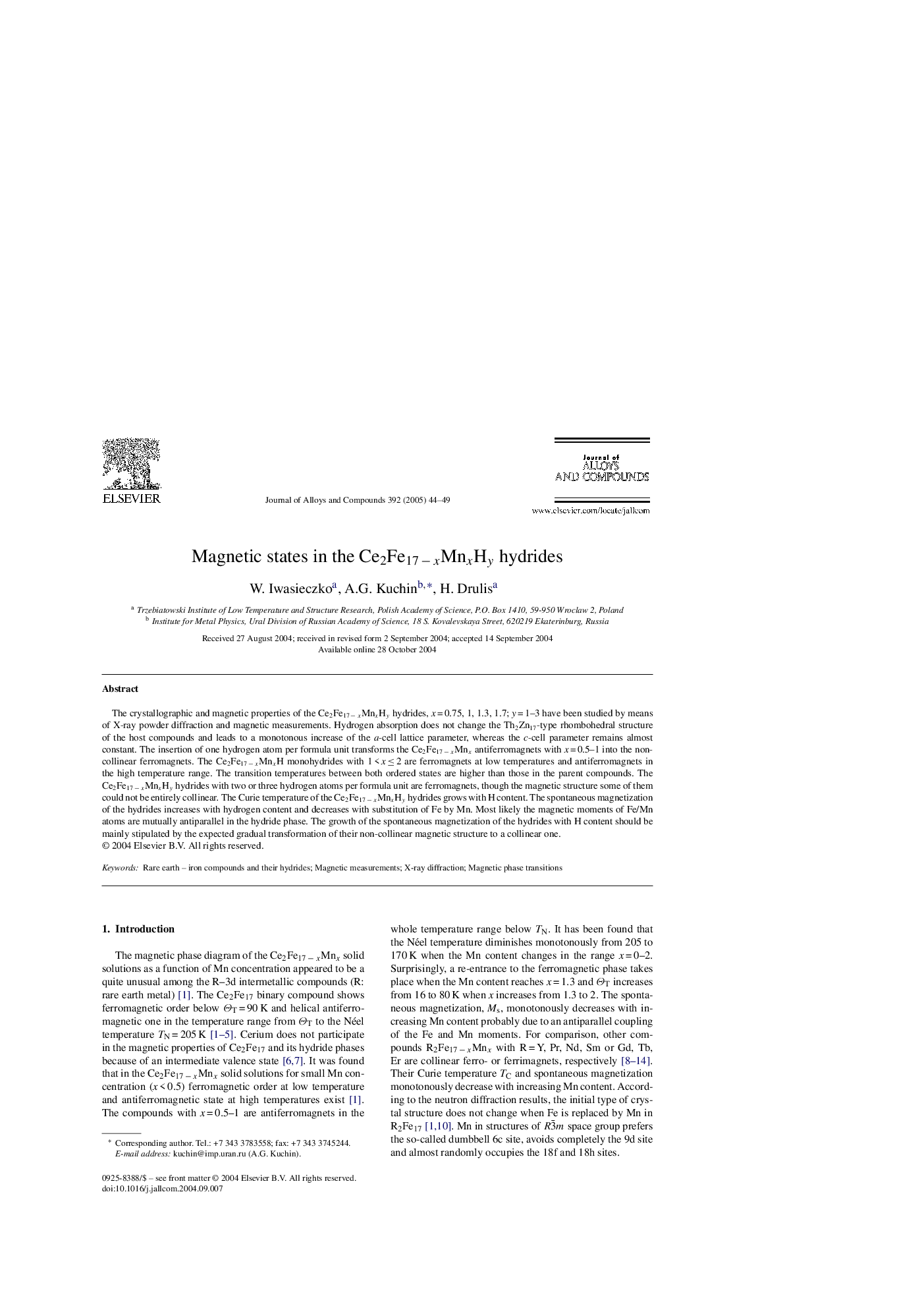| Article ID | Journal | Published Year | Pages | File Type |
|---|---|---|---|---|
| 9803900 | Journal of Alloys and Compounds | 2005 | 6 Pages |
Abstract
The crystallographic and magnetic properties of the Ce2Fe17 â xMnxHy hydrides, x = 0.75, 1, 1.3, 1.7; y = 1-3 have been studied by means of X-ray powder diffraction and magnetic measurements. Hydrogen absorption does not change the Th2Zn17-type rhombohedral structure of the host compounds and leads to a monotonous increase of the a-cell lattice parameter, whereas the c-cell parameter remains almost constant. The insertion of one hydrogen atom per formula unit transforms the Ce2Fe17 â xMnx antiferromagnets with x = 0.5-1 into the non-collinear ferromagnets. The Ce2Fe17 â xMnxH monohydrides with 1 < x â¤Â 2 are ferromagnets at low temperatures and antiferromagnets in the high temperature range. The transition temperatures between both ordered states are higher than those in the parent compounds. The Ce2Fe17 â xMnxHy hydrides with two or three hydrogen atoms per formula unit are ferromagnets, though the magnetic structure some of them could not be entirely collinear. The Curie temperature of the Ce2Fe17 â xMnxHy hydrides grows with H content. The spontaneous magnetization of the hydrides increases with hydrogen content and decreases with substitution of Fe by Mn. Most likely the magnetic moments of Fe/Mn atoms are mutually antiparallel in the hydride phase. The growth of the spontaneous magnetization of the hydrides with H content should be mainly stipulated by the expected gradual transformation of their non-collinear magnetic structure to a collinear one.
Related Topics
Physical Sciences and Engineering
Materials Science
Metals and Alloys
Authors
W. Iwasieczko, A.G. Kuchin, H. Drulis,
